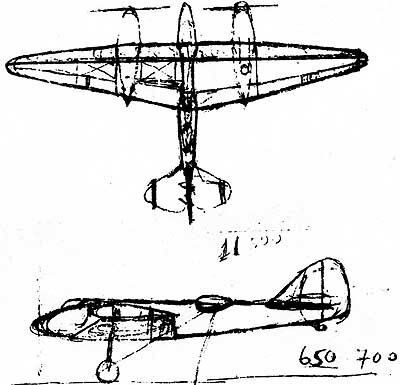ANT-57 aka "57";PB 4M-105;"101";"Polit Byuro"
May 1939
span 26m, wing area 76,5 m2 (nearly as beside Er-2)
engines 4 x 105TK (1050 hp)
max speed 570-600 km/h at 8000-10000m
ceiling max. 12500m
range 1500km (max. 4000km)
bombs 3000 kg
armament 3 x 2 Ultra ShKAS (7,62)
Bibliography:A.Medved, V.Perov "Four engines dive-bomber by A.N.Tupolev" Planes of the world #3-4 1997
M.Maslov "Dive-bomber for Lavrentiy Beriya's" As magazine #2 1993
May 1939
span 26m, wing area 76,5 m2 (nearly as beside Er-2)
engines 4 x 105TK (1050 hp)
max speed 570-600 km/h at 8000-10000m
ceiling max. 12500m
range 1500km (max. 4000km)
bombs 3000 kg
armament 3 x 2 Ultra ShKAS (7,62)
Bibliography:A.Medved, V.Perov "Four engines dive-bomber by A.N.Tupolev" Planes of the world #3-4 1997
M.Maslov "Dive-bomber for Lavrentiy Beriya's" As magazine #2 1993


















